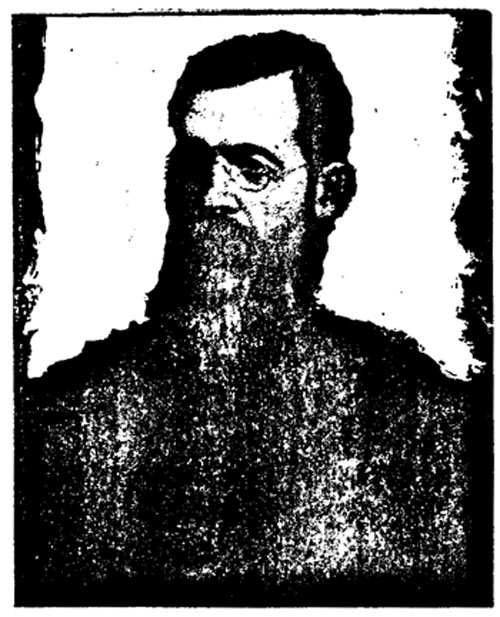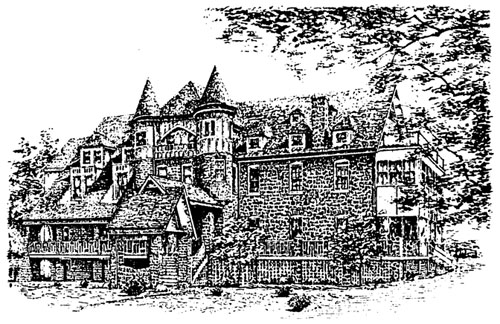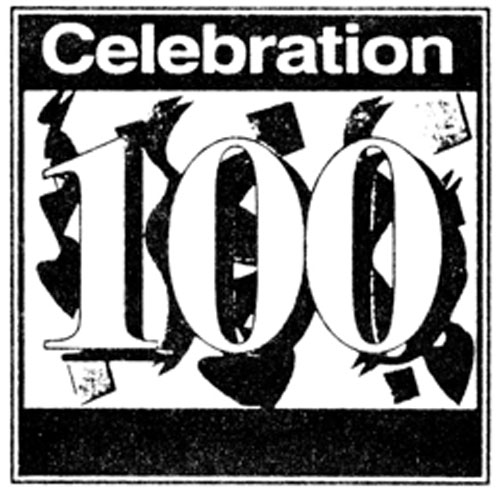|
Home : Quarterly Archives : Volume 31 |
Tredyffrin Easttown Historical Society |
|
Source: April 1993 Volume 31 Number 2, Pages 59–64 Eliza Cathcart Home 1893 - 1992 The Eliza Cathcart Home was built in 1892 and opened in 1893 as a memorial from William Stroud, a banker in Philadelphia, to his mother, Eliza Cathcart Stroud. Upon his death $200,000 was left in a trust "under the auspices of Presbyterian Hospital" to construct a home for the aged and infirm which would bear the name Eliza Cathcart Home. There was no stipulation as to where the Home was to be located, and it was decided to build it on Valley Forge Road, near the newly developing village of Devon. The Home has seen many changes over the past 100 years, from its original 40-acre working farm to its current 7 1/2-acre modern health center and independent living area. Early accounts tell us that a mill was once located on the property of the Cathcart Home, a grist mill which served Washington's men at Valley Forge during the 1777-78 encampment. Later a large lake once on the property was a local fishing attraction. Cathcart Home opened its doors to the Main Line community in November of 1893, and is now the oldest nursing home on the Main Line. During its first month of operation it was occupied by a matron and two residents. The first resident was Mrs. Mary J. Saxton, from London, England. She was admitted on November 14, 1893, at the age of 54, and resided in the Home for three years, until her death in 1896. The first male resident, also from London, was admitted the next day, on November 15, 1893, at the age of 85, and lived at the Home until he was 91 years of age. Reviewing the early patient registers of the Home, it appears that the residents were charged a lifetime fee of anywhere between $100 and $200.
William C. Stroud, who left $200,000 to erect Cathcart Home as a memorial to his mother Much of Cathcart's early history, the late 1800s and early 1900s, remains somewhat scanty in detail from the records the Home has available. We do know, however, that the Presbyterian Hospital, in building and accepting the responsibility for this venture, assigned committees to oversee its operations. The financial operations of the Home were assigned to a Board from Presbyterian Hospital, comprised of a group of men from the Hospital. The daily operations of the Home were assigned to a live-in staff: a Matron, a maid, and various utility and kitchen help. From the beginning, the staff occupied the third floor of the original Cathcart Home (now Hutchinson House) and attended to the needs of the residents. A job description from 1902 reveals that it was the responsibility of the utility man to light the gas lamps, secure the building for the evening, and make sure that all the other members of the staff were safe. The second committee of the Home was the Devon Committee or Cathcart Committee. This group of 20 women attended to fundraising needs, took charge of renovations of the Home, and provided "extras" for the residents in the form of clothing and entertainment opportunities. The local Presbyterian churches also played a tremendous role in providing regular visitors to the residents, entertainment, and necessities that were not available through the farm that operated at Cathcart in its early years. For many years Cathcart shared its ground with the Richardson Home, which was also operated by the Presbyterian Hospital, but the Richardson Home burned to the ground in 1942. The fire was started in the vacant building by three Wayne youths, who confessed to the blaze a week following the fire. A history of the various services provided by the Richardson House remains unclear to this writer, although there are references to its being used as a retreat center during the summer in the minutes of the Cathcart Committee from the mid-1930s.
The Eliza Cathcart Home That Cathcart did not lack for food or provisions throughout the early 1930s, however, is clear. The working farm had vegetable gardens, apple and peach orchards, strawberries, pigs, and chickens. References are found to attest to the "1000 jars of preserves [jellies] and 400 cans of tomatoes" which were put up by the residents, staff, and committee members of the Home. These were distributed to Presbyterian Hospital and to the local Neighborhood League and churches in addition to being used for the Home. In fact, there is a lengthy dissertation on the attributes of "fresh" eggs over "crate" eggs in the Minutes of the Cathcart Committee, the debate being whether the Home should take advantage of the Hospital's purchasing power to save money on eggs because the chickens were becoming too expensive to keep. In 1896 an addition was built to the Home and called the Hutchinson Wing. Endowment funds to construct a wing on the building had been left by Mary B. Hutchinson in memory of her parents, Phoebe and Benjamin Hutchinson. (Their portraits currently hang in the lobby of Cathcart.) The Hutchinson Wing included the chapel that remains a part of the building today. The chapel has been renovated several times during Cathcart's history and is now used weekly for devotional services for the residents. With this addition, Cathcart was actually never fully occupied until the 1950s. This was partly because some of the rooms, in fact, could not be properly heated for use in the winter months and it was not desirable to move the residents to other rooms for the winter. During the 1940s Cathcart suffered staffing problems. Accounts state that many of the male staff went to war and that nurses and kitchen help, in addition to leaving to help the war effort, fell prey to illness. The Cathcart Committee provided hands-on help to provide care for the residents, and in 1943 Presbyterian Hospital started to send its nursing students to Cathcart for two-week internships to help at the Home. In the Minutes of the Cathcart Committee there are numerous references to the "loyal and untiring efforts [of the staff] to keep patients happy through these very trying days". The nursing staff formed a choir to sing at the weekly chapel services, and was very much involved around the holidays in helping the residents put together baskets for the local churches and for poor families. The patients during this time, it was said, were "contented and well cared for as far as human hands and hearts can manage". The 1920s, '30s, and '40s showed an increased involvement by the local churches. The Wayne and Overbrook Presbyterian churches, and also the Berwyn Baptist Church, regularly sent items like fruit, cereals and jellies to Cathcart, as well as providing funds for a motion picture projector, a sewing machine, the first dishwasher, that were combined with the efforts of the Cathcart Committee to enhance the comfort of the residents. Wayne Presbyterian also bought the Home its first radio. Churches offered to furnish memorial resident rooms, starting in 1920, and at one time there were six rooms that had been refurbished and furnished by the local churches, with brass plaques demonstrating the churches' ongoing commitment to Cathcart. (It is also interesting to note that in 1947 the men decided to take over these activities and run things, but it was a short-lived experiment that lasted only a few months!) The 1950s brought the necessity to update the facilities and replace and refurnish common areas, like the residents' dining rooms and community living rooms. But as Cathcart approached the late 1960s and early 1970s it was obvious that major changes would have to be made in its operations to meet new state and federal government regulations. It was at that time that nursing homes became subject to state and federal codes and regulations, and the old fire sprinkler and fire evacuation systems had to be revamped at great expense to the Hospital. Staffing shortages were again also a problem, owing to the stricter regulations by the state for trained and licensed personnel. The rates at this time were $14.00 per day, and residents were no longer accepted on lifetime payment options. In 1966 and 1967 it became clear to the Cathcart Committee that perhaps the Hospital was thinking of divesting itself of Cathcart as there had been no mention of the Home in its annual reports for two years in succession. The committee had also witnessed the sale of some of the land and the development of housing tracts in the immediate neighborhood. By the early 1970s Cathcart had a ratio of 47 residents to 54 staff members, and obviously was no longer financially viable. In the mid-1970s a decision was made by the Presbyterian Hospital to offer Cathcart to the Orphans' Court, which, in turn, would place the Home up for offers by other management organizations. In 1978 Presbyterian Homes, Inc. of Camp Hill was awarded the responsibility for Cathcart Home, and at that time the assets and income from the trust were turned over to Presbyterian Homes, Inc. Since that time the Home has undergone many changes. Studies were made, and in 1982 a new Health Center was constructed. In compliance with the stipulation when the trust was originally established in 1892, it was named the Cathcart Health Center. The new facility could provide care for 63 residents, almost a third more than the original 47. Staff and volunteers effected the move to the "new building" from the "old building" in early 1983. In the fall of 1983 the older building was renovated into 33 independent living apartments, and at that time it was renamed the Hutchinson House. One of the best known residents of Cathcart was Bill Tubbs. He was afflicted with cerebral palsy, which left him unable to care for himself, and entered Cathcart in 1930, when he was 17 years old. Prior to coming to Cathcart he had spent his early years in hospitals, becoming educated there and through the Elks1 Club in New Jersey. After coming to Cathcart he continued to be very much self taught through his involvement with the Boy Scouts and other activities. Over the years he turned his interests into ways to introduce Cathcart to the community at large. In 1932 he earned his first dollar by writing a column for the Suburban and Wayne Times, and throughout his life was a regular contributor to the Suburban. He was the president of the Cathcart Resident Council, and the unofficial historian of the Home. [An article by him appeared in the April 1959 issue (Vol. X, No. 3) of the Quarterly.] He also loved gadgets; he had the first VCR in the Home. His vision and foresight were in evidence when he formulated "Faith Village", a legally incorporated entity; it was his dream for a home for handicapped people like himself. When he died in 1986 he left behind a rich legacy, linking the "old" Cathcart with the new during his 56-year stay at Cathcart. There were many other residents who lived at Cathcart for many years. The resident registers show residents living at Cathcart for as long as 20, 30, and even 40 years. Longevity of service has stood the test of time for staff as well. Currently Cathcart was 10 to 15 staff members who have been with the Home for 10 years or more, one of them for as long as 27 years. Its medical services were for many years offered by the wellknown community physician, Dr. Alexander O'Neal Jr., whose father, before him, served as medical director of the Home, the two of them providing a total of 83 years of service to Cathcart residents. In reviewing the 100 years that Cathcart has been serving the local community in contemplating anniversary events to mark its centennial, the staff at Cathcart has taken the rich history of the Home into account in planning events for the year-long celebration. One project will be compiling a history of Cathcart, both from its own archives and that of the Presbyterian Hospital, to develop a keepsake commemorative booklet. In addition, during 1993 Cathcart will focus its efforts on returning to the community the support the community has offered so generously in the past, by donating to local food and clothing banks, encouraging residents to share their lives with friends and the community, recognizing the efforts of the volunteers and churches who have remained steadfast to Cathcart Home through its long life, and continuing to educate the community about the services Cathcart Home offers, even after 100 years. The future of Cathcart is promising. In 1993 and 1994 Cathcart hopes to build an addition for 66 more beds, to be located on top of the existing Health Center. The decision to expand the building upward rather than outward was made to keep the open space on the property. With a long waiting list, coupled with the long history of Presbyterian Homes, Inc. in responding to the community's needs, it is hoped that the scope of the people served will also be expanded. Hutchinson House already now offers independent living and assisted living services to those who wish to maintain their independence in a comfortable and secure environment. With improvements of this sort, Cathcart Home is looking forward to the start of another century of service.
|


